
|
You entered: interstellar dust
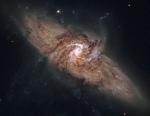 NGC 3314: When Galaxies Overlap
NGC 3314: When Galaxies Overlap
7.05.2005
NGC 3314 consists of two large spiral galaxies which just happen to almost exactly line-up. The foreground spiral is viewed nearly face-on, its pinwheel shape defined by young bright star clusters. But against the glow of the background galaxy, dark swirling lanes of interstellar dust are also seen to echo the face-on spiral's structure.
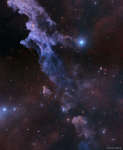 The Witch Head Nebula
The Witch Head Nebula
31.12.2018
Double, double toil and trouble; Fire burn, and cauldron bubble .... maybe Macbeth should have consulted the Witch Head Nebula. A frighteningly shaped reflection nebula, this cosmic crone is about 800 light-years away though. Its malevolent visage seems to glare toward nearby bright star Rigel in Orion, just off the right edge of this frame.
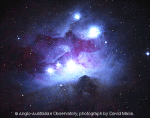 NGC 1977: Blue Reflection Nebula in Orion
NGC 1977: Blue Reflection Nebula in Orion
1.02.1998
The Orion Nebula is visible to the unaided eye as a fuzzy patch near the famous belt of three stars in the constellation Orion. The above picture captures a part of the Orion Nebula that primarily reflects light from bright Orion stars.
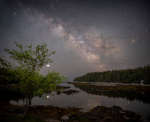 The Galaxy, the Planet, and the Apple Tree
The Galaxy, the Planet, and the Apple Tree
2.07.2020
The Old Astronomer's Milky Way arcs through this peaceful northern sky. Against faint, diffuse starlight you can follow dark rifts of interstellar dust clouds stretching from the galaxy's core. They lead toward bright star Antares at the right, almost due south above the horizon. The brightest beacon in the twilight is Jupiter, though.
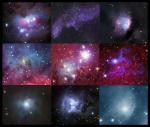 Starlight Reflections
Starlight Reflections
28.12.2001
Interstellar dust grains often find themselves in a reflective "mood". Near a bright star, clouds of these dust particles scatter short wavelengths of visible starlight more readily than long wavelengths, producing lovely blue reflection nebulae. Nine of the more spectacular examples of these dusty, blue stellar neighborhoods have been assembled here by astrophotographer Rob Gendler.
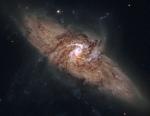 NGC 3314: When Galaxies Overlap
NGC 3314: When Galaxies Overlap
11.05.2000
Can this be a spiral galaxy? In fact, NGC 3314 consists of two large spiral galaxies which just happen to almost exactly line-up. The foreground spiral is viewed nearly face-on, its pinwheel shape defined by young bright star clusters.
 NGC 1977: Blue Reflection Nebula in Orion
NGC 1977: Blue Reflection Nebula in Orion
20.03.1996
The Orion Nebula is visible to the unaided eye as a fuzzy patch near the famous belt of three stars in the constellation Orion. The above picture captures a part of the Orion Nebula that primarily reflects light from bright Orion stars.
 The Iris Nebula in a Field of Dust
The Iris Nebula in a Field of Dust
1.08.2018
What blue flower grows in this field of dark interstellar dust? The Iris Nebula. The striking blue color of the Iris Nebula is created by light from the bright star SAO 19158 reflecting off of a dense patch of normally dark dust.
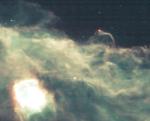 Infrared Horsehead
Infrared Horsehead
6.08.1998
This famous cosmic dust cloud was imaged in infrared light by the European Space Agency's Infrared Space Observatory (ISO) satellite. The false-color picture shows the bright infrared emission from dust and molecular gas in part of the Orion star forming region surrounding the Horsehead Nebula.
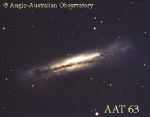 Spiral Galaxy NGC 3628 Edge On
Spiral Galaxy NGC 3628 Edge On
1.11.1996
This is what a spiral galaxy looks like sideways. This view of NGC 3628 nearly resembles our own Milky Way Galaxy, which is also known to be a spiral. The dark band across the center is absorbed starlight caused by the galaxy's own interstellar dust.
|
January February March April May June July |
|||||||||||||||||||||||||||||||||||||||||||||||||